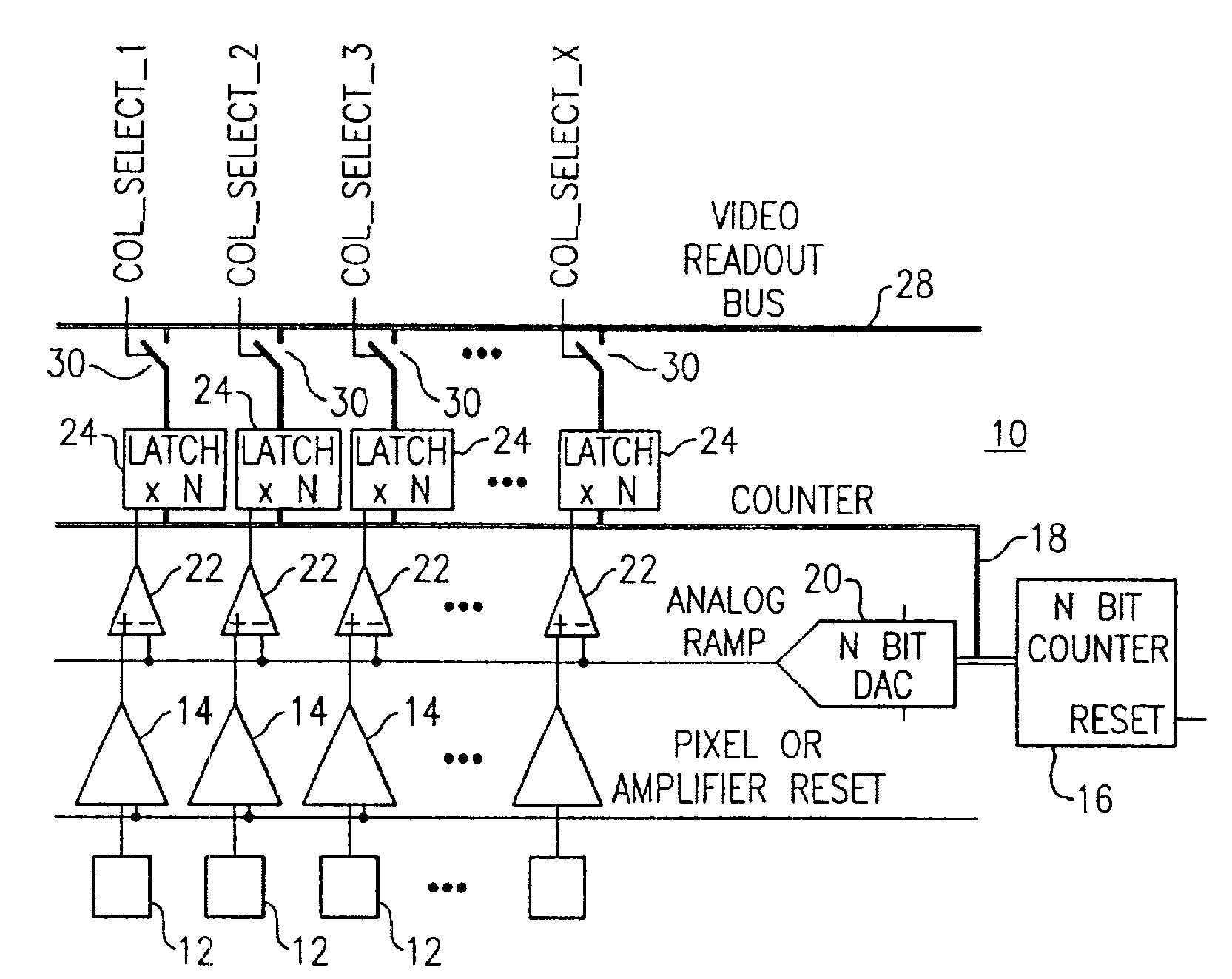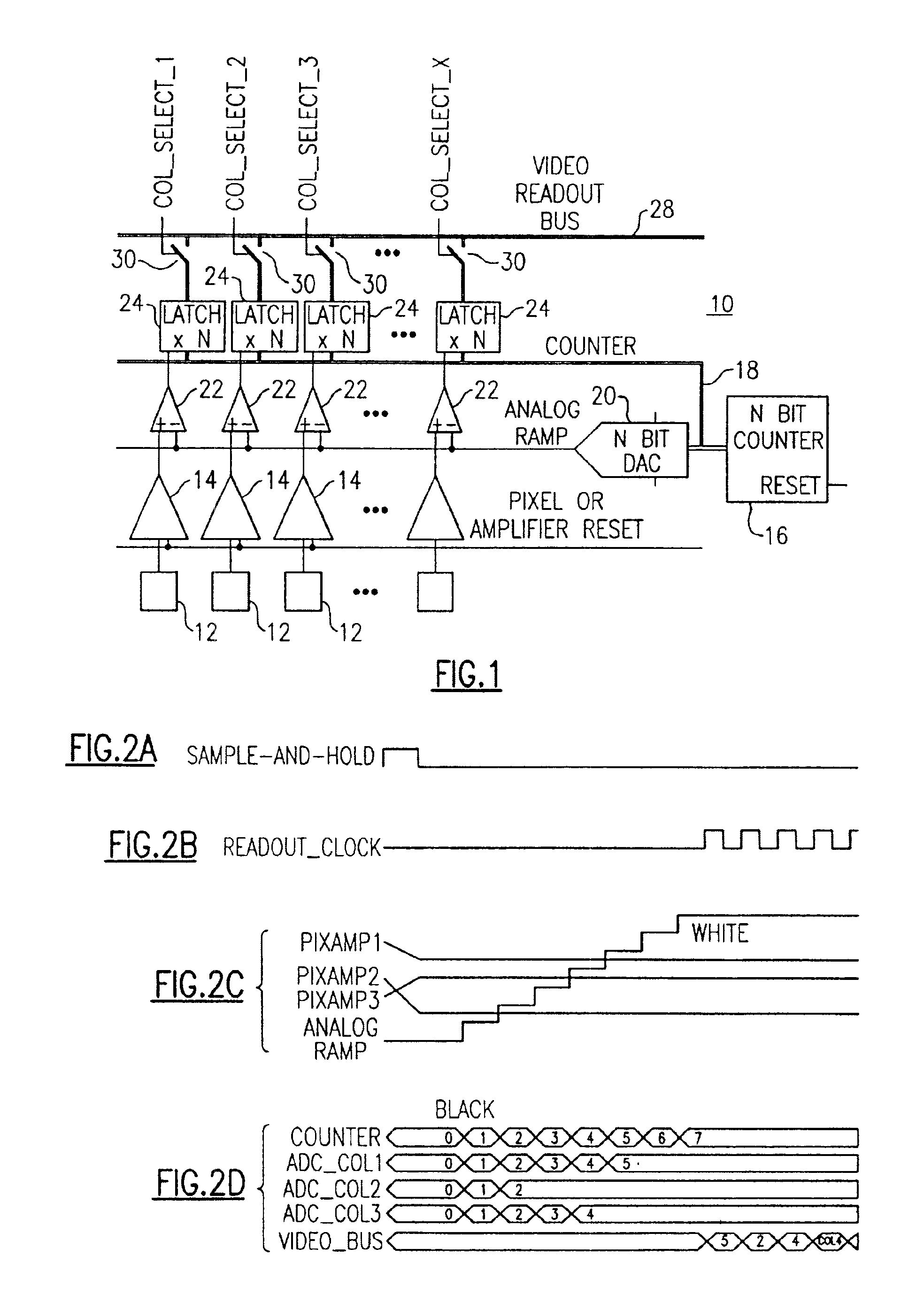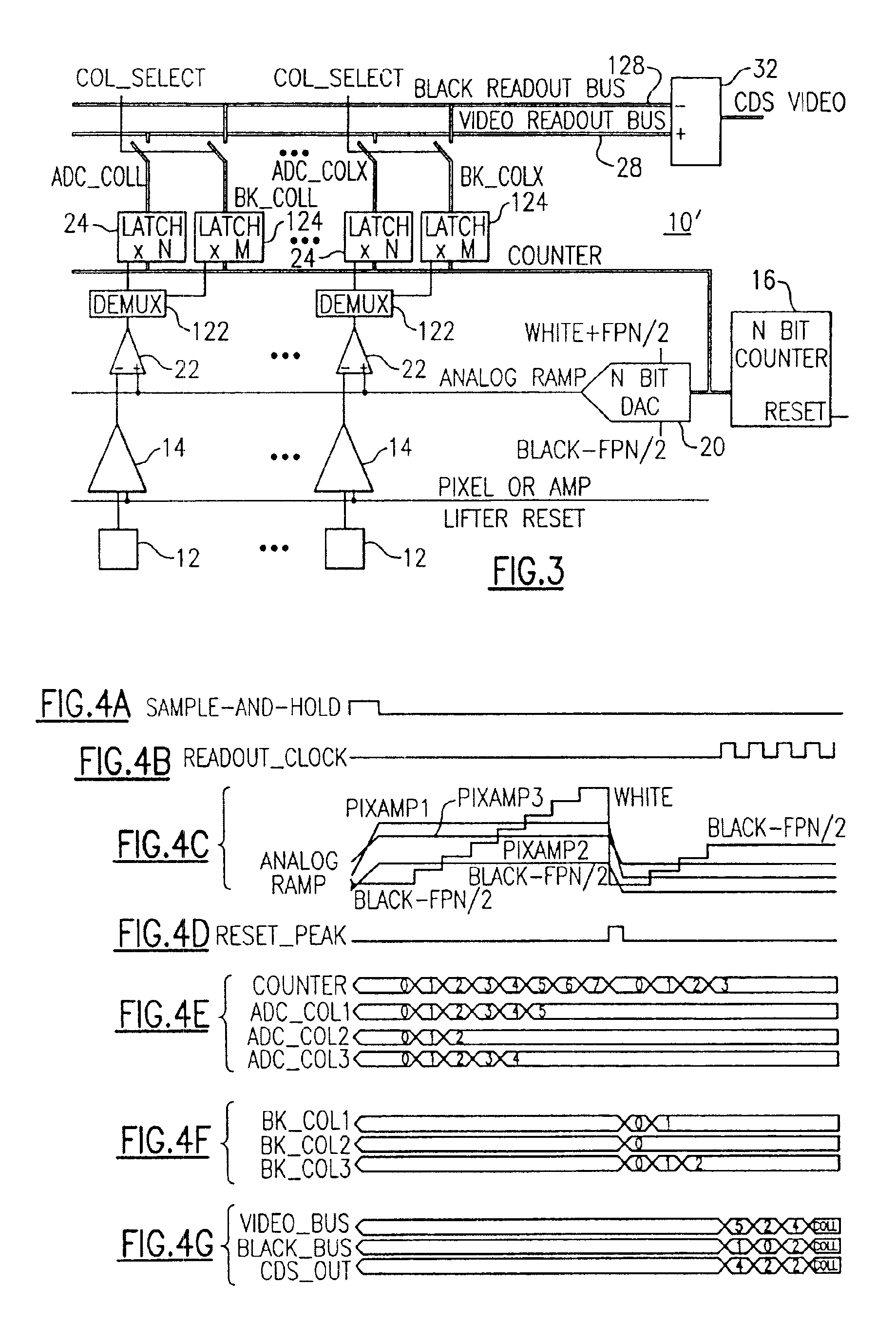Image sensor ADC and CDS per column
a column-based image sensor and image sensor technology, applied in the field of solid-state imaging devices, can solve the problems of large-bus analog multiplexing, high undesired power consumption for the entire array, and large noise of analog current, so as to achieve the effect of reducing the available area
- Summary
- Abstract
- Description
- Claims
- Application Information
AI Technical Summary
Benefits of technology
Problems solved by technology
Method used
Image
Examples
Embodiment Construction
[0029]With reference to the Drawing figures, and initially to FIG. 1 thereof, an arrayed solid-state imager 10 is shown, which incorporates an N-bit ADC conversion facility that employs an N-bit counter and a DAC to generate an analog ramp.
[0030]In this imager 10, there are multiple columns, each comprising one or more pixels 12. In this case the pixel 12 represents one or multiple pixels of the same column, and each pixel 12 is connected with an input of a column amplifier 14. A pixel reset line is also connected to a reset input of each of the column amplifiers 14. An N-bit counter 16 counts up clock signals and supplies a digital count value on a counter output bus 18 that supplies an input of a DAC or digital-to-analog converter element 20. In this embodiment a low count value corresponds to a video dark or black value, while a high count value corresponds to white. The DAC 20 creates a ramp voltage output that steps up incrementally with each count, and then cycles or resets an...
PUM
 Login to View More
Login to View More Abstract
Description
Claims
Application Information
 Login to View More
Login to View More - R&D
- Intellectual Property
- Life Sciences
- Materials
- Tech Scout
- Unparalleled Data Quality
- Higher Quality Content
- 60% Fewer Hallucinations
Browse by: Latest US Patents, China's latest patents, Technical Efficacy Thesaurus, Application Domain, Technology Topic, Popular Technical Reports.
© 2025 PatSnap. All rights reserved.Legal|Privacy policy|Modern Slavery Act Transparency Statement|Sitemap|About US| Contact US: help@patsnap.com



